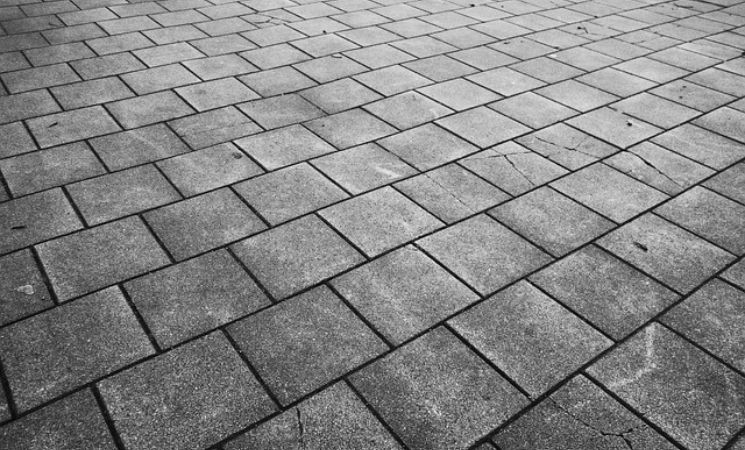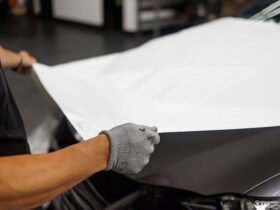Choosing the right tile adhesive can make a difference in a tiling project’s success. Since there are many options available, finding the right one can be overwhelming. Whether working on a kitchen backsplash or a bathroom floor, the right adhesive can withstand daily wear. In this article, you will discover the ten essential tips to simplify the decision-making process and ensure a long-lasting installation.
1. Understand the Types of Tile Adhesives
Before selecting an adhesive, it’s important to know the different types available. Thin-set is a cement-based product, ideal for various tile types and recommended for areas exposed to moisture. Mastic, a premixed adhesive, is convenient for indoor applications but not suitable for wet areas.
While Epoxy adhesives provide strong bonding and are resistant to moisture and chemicals, making it perfect for demanding environments. For instance, larger tiles may require a stronger adhesive like thin-set or epoxy. In contrast, smaller tiles or light materials can work well with mastic. Each type has its unique properties that can make the best choice for a specific project.
2. Assess the Surface
Having a clean and dry surface provides the best foundation for tile adhesion. Whether working with concrete or plywood, ensure the surface is in good condition. Any imperfections can affect how well the adhesive bonds with the tile.
As you are ready to apply the adhesive, you should remove dust or old adhesive residues first to create a clean area for bonding. Keep in mind that proper surface assessment helps avoid issues down the line, ensuring a durable and visually appealing finish.
3. Consider Tile Material
Choosing porcelain and glass have different requirements. For example, porcelain tiles often need a high-quality thin-set adhesive to support the weight and density. On the other hand, glass tiles require specific adhesives to prevent cracking during installation.
Understanding the material’s characteristics helps choose a tile adhesive that will bond effectively. Always check the manufacturer’s recommendations for the best adhesive for specific tile types to ensure that it provides optimal performance.
4. Factor in Moisture Levels
Moisture is another crucial consideration when selecting tile adhesive. Areas with high humidity, like bathrooms or kitchens, require moisture-resistant adhesives to prevent deterioration. Thin-set and epoxy adhesives are often preferred in these environments due to its durability and water resistance.
In low-moisture areas, such as living rooms or hallways, adhesive choice can be more flexible. However, opting for moisture-resistant products is still a wise choice to ensure long-lasting results. That’s why proper moisture management leads to successful tile installations, avoiding potential issues later.
5. Evaluate Working Time
Different adhesives have varying working times, affecting how long one can manipulate tiles after applying adhesive. Quick-setting adhesives allow for faster installations but can be challenging for beginners. Slower-setting adhesives provide more flexibility, allowing adjustments during the installation process.
Think about the project’s complexity and personal skill level when choosing an adhesive. If working on intricate patterns or large areas, a slower-setting adhesive may be more manageable. So, balancing working time with installation requirements is essential for a successful project.
6. Check for VOC Levels
Volatile Organic Compounds (VOCs) are chemicals that can evaporate into the air and affect indoor air quality. Some tile adhesives contain high levels of VOCs, which is unsuitable for indoor projects. Selecting for low-VOC or VOC-free options is a healthier choice, particularly for enclosed spaces.
Additionally, you should review the product labels to check for VOC content before making a decision. Furthermore, prioritizing health and safety during the selection process leads to a better indoor environment while achieving desired aesthetic results.
7. Review Manufacturer Recommendations
Manufacturers often provide guidelines and recommendations for specific adhesives, considering tile types and application methods. Reviewing these recommendations helps in selecting the most suitable product for the project. On top of that, staying informed about manufacturer specifications also allows for better understanding of product limitations and capabilities.
8. Consider the Tile Size and Weight
Larger and heavier tiles require a stronger adhesive to support the weight. High-quality thin-set or epoxy adhesive provides the necessary bonding strength for such tiles. For smaller, lighter tiles, a standard adhesive may suffice. However, ensuring it meets the project’s specific requirements is crucial for achieving good installation. Plus, keeping tile size and weight in mind simplifies the decision process.
9. Analyze Temperature Conditions
Temperature conditions during installation can influence adhesive performance. Extreme heat or cold can affect how well adhesive bonds with tiles. Most adhesives perform best within specific temperature ranges, so understanding these limitations is vital.
But if working in environments with temperature fluctuations, consider using products designed for those conditions. Don’t forget that choosing the right adhesive for the climate helps ensure a stable and long-lasting installation.
10. Budget Considerations
While it’s tempting to opt for cheaper options, investing in a high-quality adhesive can save you money. Low-quality adhesives may lead to issues such as peeling or cracking, requiring costly repairs or replacements. Compare prices while considering the quality and performance of various adhesives. That is the reason why finding a budget and product effectiveness is essential for achieving positive results.
Simplify Your Adhesive Selection for Lasting Results!
By understanding the different types of adhesives, assessing surfaces, considering tile materials, and accounting for moisture levels, one can simplify the selection process. Other factors, such as working time, VOC levels, manufacturer recommendations, tile size and weight, temperature conditions, and budget, also play vital roles in making an informed decision.












